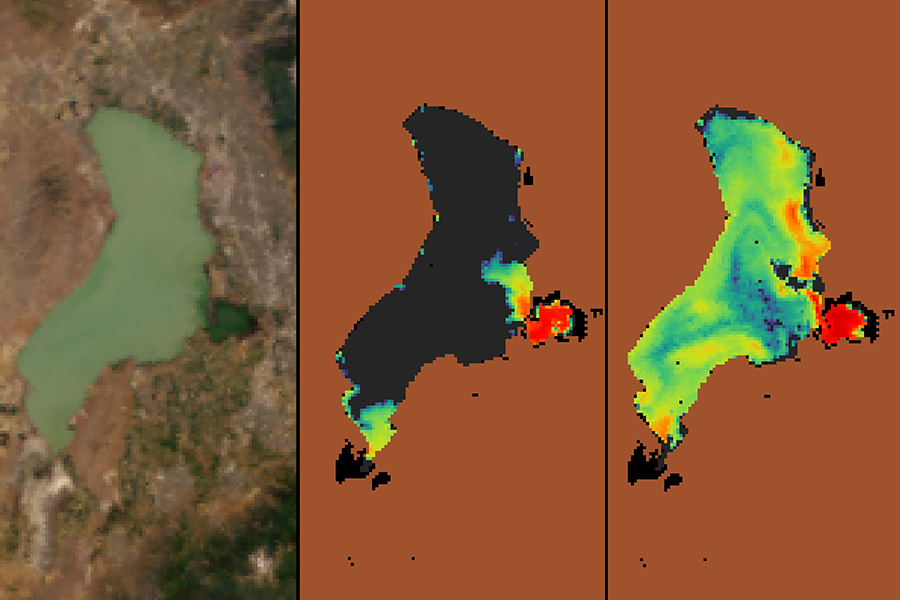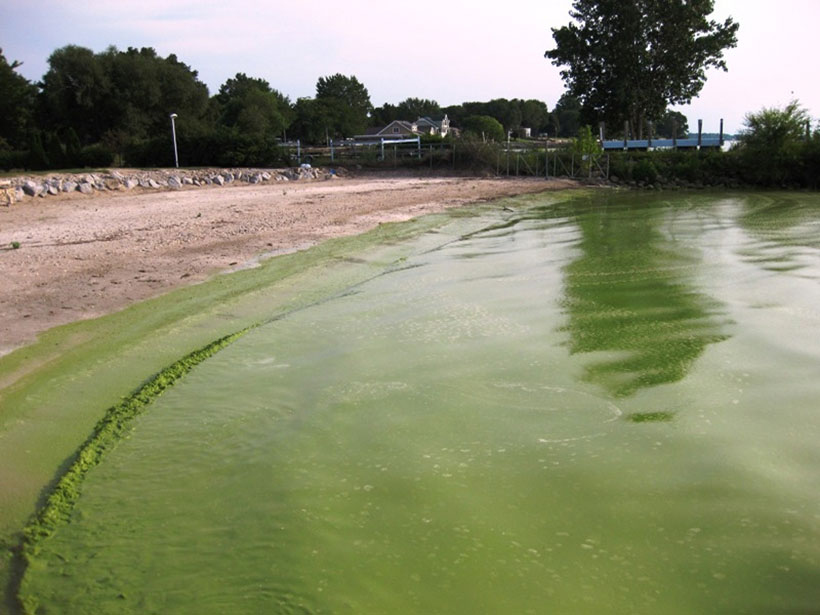Source: GeoHealth
Explosions of cyanobacteria in both freshwater and brackish environments can lead to dangerous conditions for humans because of the accumulation of toxins produced by the microbes. Such blooms, known as cyanobacterial harmful algal blooms (cyanoHABs), may increase in frequency, extent, and magnitude as water temperatures around the world rise and as waterways receive more nutrient-rich runoff. Because of the health risks and negative economic effects associated with cyanoHABs, researchers and decision-makers are looking for new ways to detect them.
In a new study, Stroming et al. describe a framework for quantifying socioeconomic benefits of monitoring cyanoHABs with satellites. By looking at a series of case studies, the researchers consider how decision-makers change approaches when satellite data are available and whether the data lead to decisions that reduce harm and save money.

They also applied their framework to a cyanoHAB event at Utah Lake in 2017 to estimate how much money was saved through the use of satellite-based data from the Cyanobacteria Assessment Network, with a focus on the costs of treating illnesses associated with human exposure to the cyanoHAB. In total, the team calculated that the satellite data led to 400 fewer gastrointestinal illnesses of varying severity, which translates to between $55,000 and $1,057,000 in socioeconomic benefit in the form of avoided medical costs and lost productivity. The savings came primarily from earlier detection of the bloom, which gave authorities more time to post warnings around the lake and limit the number of individuals exposed to the toxic water.
The researchers note that such figures may not be broadly applicable to other bodies of water. Utah Lake is large and shallow and is a very popular destination for recreation, all of which make it ideal for applying remote sensing and maximizing socioeconomic savings.
They also point out that savings are maximized when the public is unaware of the danger of cyanoHABs. In such cases, early-warning signage can lead to massive reductions in harm, but if the public becomes savvier to the danger, adding warnings leads to lower cost savings. Nonetheless, the scientists conclude that careful application of remote sensing technologies for cyanoHAB detection could yield substantial socioeconomic benefits for large bodies of water that are hot spots for recreation. (GeoHealth, https://doi.org/10.1029/2020GH000254, 2020)
—David Shultz, Science Writer
Citation:
Shultz, D. (2020), Remote sensing of algal blooms can improve health and save money, Eos, 101, https://doi.org/10.1029/2020EO147771. Published on 27 August 2020.
Text © 2020. AGU. CC BY-NC-ND 3.0
Except where otherwise noted, images are subject to copyright. Any reuse without express permission from the copyright owner is prohibited.

